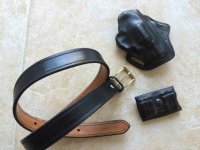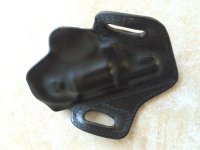You see posts about how strong and durable horsehide is for holsters.
How does that work, cause when still on the horse, it sure isn't durable!
Seems to tear awfully easy on just about everything while still on the horse!
Don't know about mulehide, and haven't heard about a mule hide holster?
The mules I have been around look like they have the same hide as a horse?
How does that work, cause when still on the horse, it sure isn't durable!
Seems to tear awfully easy on just about everything while still on the horse!
Don't know about mulehide, and haven't heard about a mule hide holster?
The mules I have been around look like they have the same hide as a horse?


